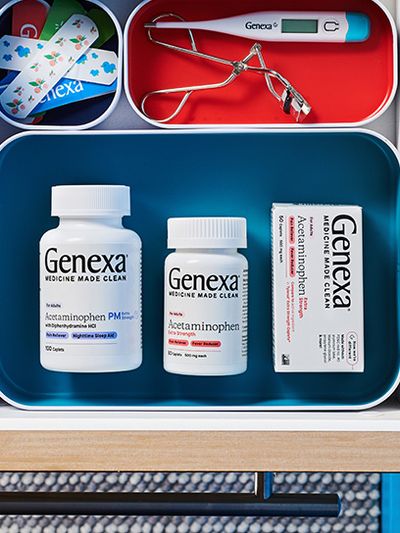Finding The Best Flu Medicine For Kids
What To Look For
Table of contents:
The flu is one of those winter viruses that leaves your little one feeling tired and really under-the-weather.
Luckily, there’s lots of medicines out there to help you manage your kid’s symptoms and get them back to their happy, healthy selves.
Check out this article for an overview of the flu, tips for the best kids’ flu medicine out there, and a few ways to try and prevent your kids from picking up this pesky virus in the first place.
What is the flu?
Basically, the flu is a viral infection that’s really contagious and targets the nose, throat, and sometimes the air passages of the lungs. Influenza is the “technical” name for the flu.
In little ones, the flu tends to stick around for about a week or so but can last longer in more severe cases. The biggest fear with the flu is that it will turn into a lung infection, which can lead to hospitalization at the least.
Thankfully, there’s lots of ways to treat flu symptoms and protect your kids against this pesky virus.
Causes
The main way the flu is spread is through sneezing and coughing. That being said, the reason this virus is so contagious is because it can live on surfaces.
If your kid touches a surface with flu virus on it and then touches their mouth, nose, or eyes, they can catch the flu. The flu is also spread through shared utensils and food.
You can easily imagine how school environments with cafeterias, locker rooms, and shared bathrooms are a place where the flu can easily spread from kid to kid. Also, given that little ones are constantly touching toys, desks, tables, etc. then touching their face, they are more likely to spread the virus than adults.
Someone with the flu is most likely to spread it to others for the 24 hours before their symptoms start. They are then contagious for about seven days after their symptoms start. Given that you can be contagious before you even know you have the flu, it’s an incredibly easy virus to spread.
Symptoms
Although you can spread the flu before you have it, once symptoms start, the flu is pretty easy to identify. Common flu symptoms include:
- High fever
- Headache
- Clear or stuffy nose
- Sometimes sneezing
- Severe cough
- Severe body aches
- Extreme tiredness
- Sometimes a sore throat
Strains
There are three different categories of flu virus that you should know about: Influenza types A, B, and C.
Influenza A and B are the types of flu that cause the most intense symptoms. For this reason, health officials are really focused on stopping the spread of types A and B every year. This can sometimes be tricky because these strains mutate every year which makes it hard to develop highly effective vaccines.
Influenza C causes a very mild respiratory illness and can sometimes cause no symptoms at all. For this reason, health officials don’t generally worry about this strain because it isn’t responsible for “flu season” every winter.
Flu vs. Cold
Sometimes “flu” and “cold” are used interchangeably to describe the yucky sicknesses kids pick up in the winter, but there’s actually some important differences between the two.
A good rule of thumb to keep in mind is that flu symptoms are generally much more severe than cold symptoms. For example, a cold might cause a mild cough, mild body aches, and mild tiredness, but all of those will be much more extreme in the case of the flu.
The best way to know if your little one is fighting off the common cold or the flu is if they have a fever. Usually, a cold will not cause a fever, and if it does, it will be a low one. Unfortunately, the flu causes high fevers, around 103 to 104 F.
Best At-Home Flu Treatments for Kids
Now that you have an overview of the flu, you might be wondering: how do I help my kids if they catch the flu? There are a few medications and remedies that you can use at home to help your little one feel better.
Medicine
If your kid is complaining of body aches (including a headache) and has a fever, try giving them medication with acetaminophen.
Acetaminophen is known to be effective in treating moderate pains and fevers. Genexa makes a formula containing acetaminophen - Kids’ Pain and Fever. And best of all, it’s clean! Meaning it has the same active ingredient as the leading brands, but none of the synthetic inactive ingredients found in most OTC formulas. This medication is safe for kids above the age of two. If you think your baby or toddler has the flu, always check with your doctor about treatment options.
If your little one has a cough as a result of the flu, you can try giving them Genexa’s Kids’ Cold Crush. This homeopathic remedy addresses symptoms of the common cold that sometimes arise with the flu including cough, runny nose, and sneezing.
If you do end up taking your kid to the doctor, they may be prescribed an antiviral medication. Although these medications don’t “cure” the flu, they can ease the symptoms if your child’s case of the flu is more severe and requires medicine stronger than over-the-counter medications. It’s a good idea to call your doctor if your kid’s symptoms don’t improve at all with over-the-counter medicine or if they persist for longer than a week.
Remedies
Although they sound basic, the best two home remedies for the flu are classics: rest and fluid.
Given that the flu is a more serious virus, it may leave your little one feeling super tired and generally run down. After giving them medication, one of the best things for them can be lots of rest in bed.
It’s also important to give your kid plenty of water while they’re fighting off the flu. Often the fever associated with the flu can draw the moisture out of your kid’s body, so it’s important to help them fight off the effects of dehydration. Drinking plenty of fluids (especially really cold and really hot ones!) can also help ease the pain of a sore throat.
Things to Avoid
The most important thing to keep in mind when treating your kid with the flu is to not give them aspirin. There’s a link between kids recovering from the flu and other flu-like illnesses who take aspirin and Reye’s syndrome. For this reason, it’s best to completely avoid aspirin when treating your child’s flu.
Flu Prevention Methods
There’s a few different ways to protect your little one so they are less likely to catch the flu. The simplest way is to get them the yearly flu vaccine. It’s safe to give any child six months old or older the flu vaccine, and it can protect your kid against this nasty virus. Given that the flu virus mutates every year, it’s important to get your kid vaccinated every year with the updated vaccine.
You can also make sure to stress to your kid the importance of hand washing, especially during winter, and make sure they know to cover their nose and mouth when coughing or sneezing.
Summary
The flu is a common virus that tends to spread quickly in the winter. Although it can be very dangerous, most cases of the flu cause symptoms that can be treated at home. Symptoms include a high fever, body aches, and a cough.
Using over-the-counter medications to treat the fever, aches, and cough can be a great way to help your little one fight off the flu. Get well soon!






